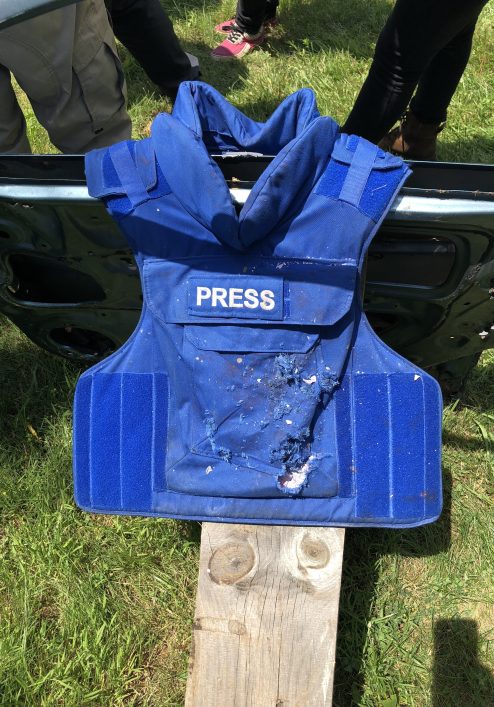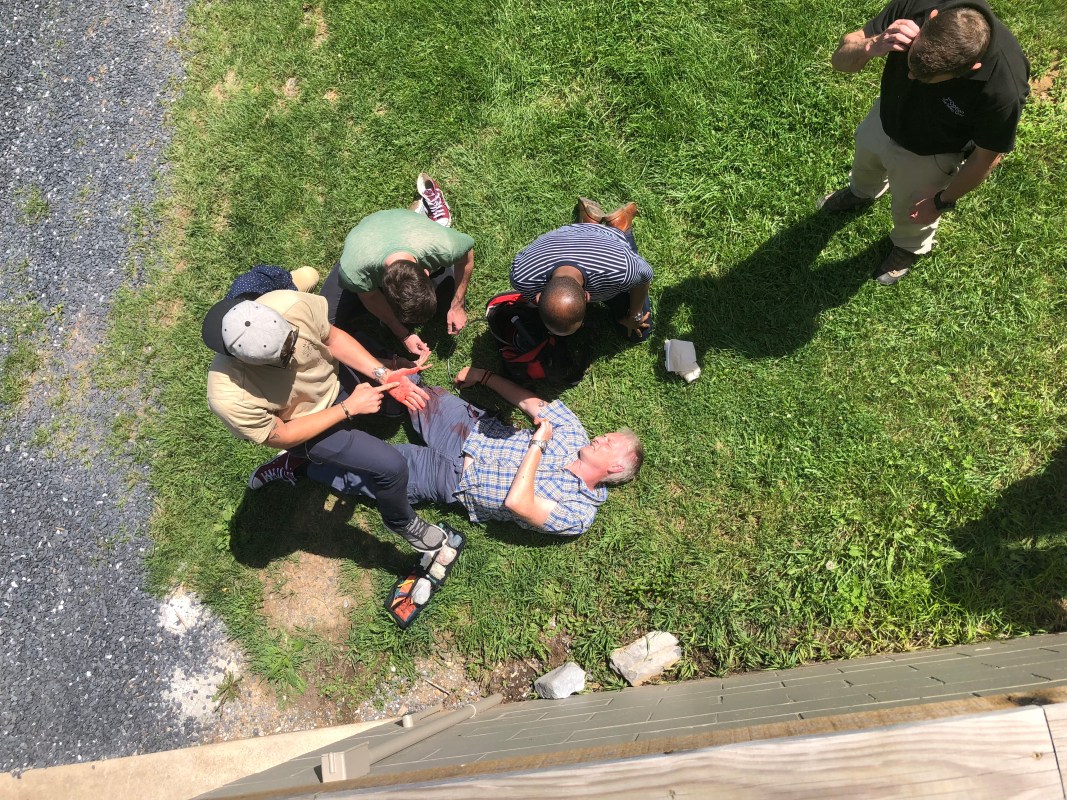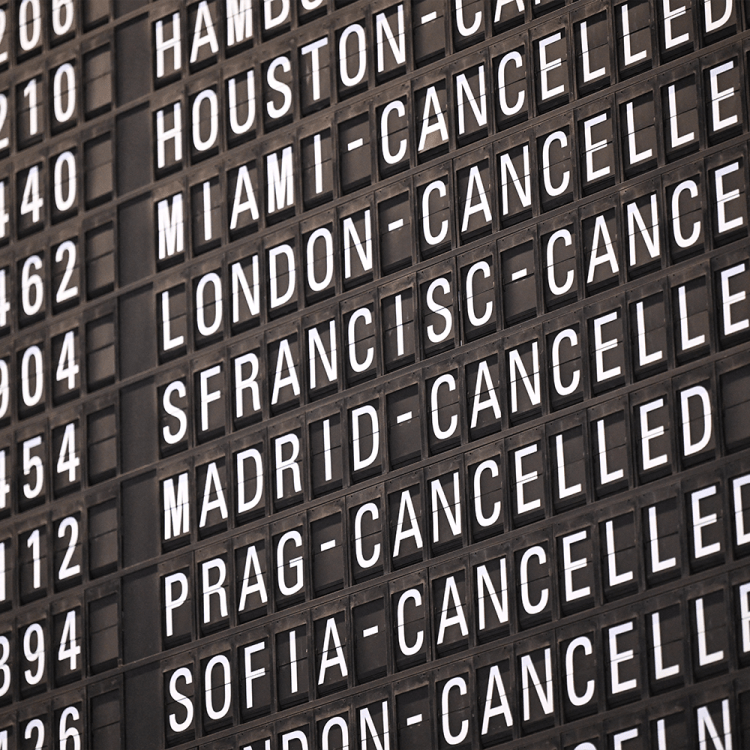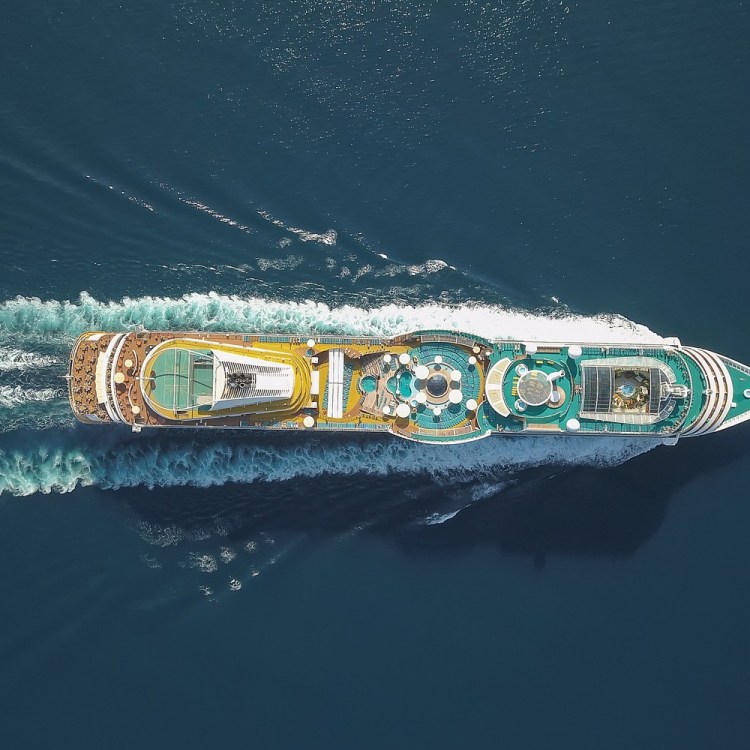When most people plan a trip, they’re thinking mostly about things like the architectural wonders, sun-kissed beaches, or powder-covered ski runs they will enjoy at their destination. Any thoughts for personal comfort and security are typically limited to making sure you have a valid passport, spare cash, appropriate shoes, and maybe be on the lookout for pickpockets. Whether or not your trip abroad risks injury, kidnapping, or possibly even death, on the other hand, isn’t on most people’s minds.
But for a lot of journalists, intense contingency planning to avoid such fates while traveling the world is all part of the job. When reporting from places like Mexico, Syria, or the Democratic Republic of Congo, journalists are exposed to everything from violent crime to abduction to actual combat. According to the Committee to Protect Journalists, 46 journalists were killed in 2017 while 262 were imprisoned worldwide. And since 1992, fifty-nine journalists have gone missing.

To avoid becoming one of these tragic statistics, there are options for journalists to learn how to stay safe while overseas. Hostile Environment/First Aid Training (HEFAT) teaches journalists about the risks they face when traveling internationally, and how to best handle hostile situations and chaotic environments.
I recently went through this training thanks to the Pulitzer Center on Crisis Reporting. It’s a five-day, extensive course, that covers everything from how to properly tourniquet a limb to what to do if you become a hostage. It is not supposed to teach you everything you need to know in emergency situations, but helps you become aware of how your body and mind will react in certain scenarios.
“We want to raise your awareness to get you looking out and opening your peripheral vision to take in more information around you for that dynamic risk assessment once on the ground, but also it is about providing you with a mental toolbox. If you have no training, you have no toolbox,” said Steve Cook, media advisor for 1st Option Safety, before the training started.
I know not everyone wants to spend five days learning what different artillery sounds like and bandaging fake wounds — much less going through a kidnapping scenario where you get interrogated. But there were important lessons that came out of HEFAT that could be helpful for all travelers.
Do Your Research
A key aspect of HEFAT is planning ahead. Though it is often easier to say, “Oh, I will deal with that when the time comes,” that could be a fatal mistake.
Start off by doing research on your destination’s culture: What do people wear, what types of foods are common and might be offered to you, should you shake hands or kiss cheeks? Are there any hand gestures should you avoid at all costs? You can use social media, local nonprofits, and friends or family members who have traveled there before as resources to fill you in.
But this research needs to extend past mere cultural knowledge. You need to dig into the logistics as well. Look up your hotel on a digital map (and download those maps to your phone so they work when you don’t have a cell connection or wifi), get a feel for its surrounding neighborhood, know if Uber, Lyft, or a local equivalent operate there and what a legal cab looks like. Learn how to beware of people who might just be trying to scam some cash off of you.
Likewise, figure out where the nearest—and best—hospital is, and how you would get there in case of emergency. Don’t forget to look up the possibility of natural disasters during the time you will be there: Is it monsoon season? Is a nearby volcano erupting? Is your destination prone to earthquakes?
Choosing Accommodations
The safest place to stay in a hotel, according to HEFAT, is between the third and sixth floors. The third and fourth floors are best, and preferably an internal room, not a corner. Never stay on the ground floor and do not stay above the sixth floor. On the third or fourth floor, you have enough time to hear any assault on your hotel and figure out a course of action: Barricade or escape?
You also want to make sure that your room has a deadbolt as well as a regular lock. Consider bringing a rubber door stopper to jam the door when you’re in the room. These devices make it all but impossible for someone to force the door open if your foot is bracing it. There are also door stoppers that have alarms on them, which go off if someone tries to force their way in.
Also consider the general security of the hotel. Is it near a road? Is it possible for people to get in and out easily? What about the lobby? Do people who aren’t staying at the hotel have easy access to it? What is the security staff like? Is it a tourist-heavy hotel, which might be more likely to be targeted? These are all questions you should ask yourself during your pre-trip research.
Out and About
The threat to Americans traveling abroad is especially real. On May 12, 2018, the U.S. State Department issued a global alert, warning that it “remains concerned that terrorists are intent on targeting U.S. citizens, including children,” the bulletin read, according to Global News.
The best way to stay safe while out and about in a country is to avoid following patterns and routines. If you plan on doing the same activities or going to the same places frequently, switch up your routes or go at different times every day. Choose clothing that blends in rather than sticks out, don’t wear ostentatious jewelry or display other obvious signs of wealth and don’t carry all your cash and credit cards with you. And consider buying a small documents holder that can hide the U.S. passport’s trademark blue cover.
Attending large festivals or mass concerts is a common vacation activity, and there is safety in numbers. But be forewarned that large crowds carry their own series of risks, too. A group of like-minded people reinforces each other’s viewpoints, Psychology Today writes, and we are influenced by the actions of those around us. So if you are in a crowd and you start to get harassed, the best response is to eliminate anonymity in both your self and your aggressors by making eye contact and trying to calmly explain who you are and what you are doing in the crowd: “My name is Rebecca and I am here with my family to enjoy the parade, I mean no harm, can you tell me your name, sir?” You want to keep open hand gestures (no clenched fists or hands in pockets) and avoid insulting your aggressor. If you get backed into a corner, start shouting exactly what is happening, describe the person and try to make direct eye contact with other people in the crowd.
If you are in a group in a crowd and you need to leave quickly, be sure to all move together, join arms so you have your hands free to protect your head, and take small, deliberate steps to avoid falling. Before you go into the crowd, know how to get out and have a meet-up location arranged ahead of time for if you do get separated. One example given at HEFAT was to put carabiners on the back of someone’s pants. That way, if you see danger, you can grab them firmly and pull them with you.
What to do if you are kidnapped
Unfortunately, the risk of abduction is something every traveler overseas should at least consider. In 2016, terror attacks and fatalities fell even as kidnappings rose, according to data from the Global Terrorism Database. The number of hostages taken nearly doubled in 2016 and seven out of the 10 deadliest terror attacks that year involved kidnappings and hostage-taking. In each one, more than 100 victims were abducted and killed.
HEFAT does role-play scenarios so that journalists know what it feels like to have a bag thrown over their head, dumped into a car and interrogated. They surprise you and come at the time you least expect it, even if you’re on-guard all week. The trainers are highly skilled, and pinpoint weaknesses so that the scenario is as real-life as possible. I even told one of my trainers that my upper-body strength was waning since I hadn’t been able to go to boxing lessons recently. All my stress positions during the kidnapping scenario included having my arms in the air.
Even for someone like me, who has been through this experience in a training environment, it’s easy to find yourself losing your grasp on reality when you’re put in your fourth stress position on a cement floor or getting told a friend might die if you lie. So, here are some potentially life-saving steps to take if you are—or fear you are about to be—kidnapped:
1. If your hands are free or if you can still reach your phone, try to speed-dial a number on it and drop it on the side of the road, or stick it deep into the seat cushion of the car being used to abduct you. Your phone’s GPS can be tracked, so you want it to be either with you or in your last known location. Also know that kidnappers rarely spirit a hostage deep into the countryside or mountains; instead, they typically stash him or her somewhere that is only about 20 minutes from the abduction site.
2. Be compliant, don’t fight or talk back. In order to escape, you need to know a lot: where you are, if your kidnappers have weapons, where you would go, how you would get out. It’s not wise to just race out the door without any knowledge about what’s on the other side.
3. Don’t offer too much information, but answer our abductors when they ask questions.
4. Humanize yourself and maintain your value— you have worth in a monetary sense, but do you have kids, family, a dog, anything that will remind them that you are a human being.
5. Keep a positive attitude by setting small mental goals.
This goes back to the most important lesson HEFAT teaches journalists: Be prepared and do your due diligence. In your research, look at the profiles of who tends to be kidnapped, why, and how. In addition, make a plan to check in with someone frequently while traveling. If you miss a check-in time, what steps will that person take, and at what time intervals? If the kidnappers reach out for a ransom, who will be in charge of negotiating on your behalf? Before you go, give that someone key pieces of information: your passwords, your proof-of-life questions (nothing that can be Googled), your will.
What Will Protect You From Gunfire
In case you get into real, bullets-flying-around trouble, know how to protect yourself and others. In movies, people always get out of their cars and hide behind the doors as bullets ricochet off of them. In reality, the thin sheet metal of a car door provides little to no protection from bullets.
If you must hide behind a car, crouching beside the tires or near the engine are safer spots. An even better option is to find a cinderblock wall.
Cinderblock or concrete offers much better cover from gunfire. This block stopped a round fired from an assault-style, semi-automatic rifle. (Rebecca Gibian/RealClearLife)Diseases and Sickness
Sometimes, humans aren’t the biggest threat abroad, diseases are, and nothing ruins a trip faster than spending it in bed or in the bathroom. Make sure you research the risks of serious bacterial infections from cholera, malaria, and typhoid fever at your destination and get vaccinations for them before you go. Sometimes, the vaccines take a few days to start working, so be sure to get any shots far enough in advance that they’re protecting you by the time you first arrive. Some countries will ask for proof of these vaccines before they let you enter, so be sure you know if you need that card with you in your passport. To prevent more common bacterial diseases like dysentery, caused by poor hygiene, wash your hands frequently, and remember when eating any food: boil it, cook it, peel it or forget it. And if you’re at all unsure, avoid local tap water—and ice—and instead drink only bottled water or processed beverages.
Be safe, have fun
Kidnapping, hotel security, and diseases are not fun vacation topics, but they are necessary things to think about in the world we live in. Having some simple supplies in a first aid kit you can carry with you is also a good idea, especially if local medical care is spotty or far away.
Med kit supplies laid out. Rebecca Gibian/RealClearLifeWhile most vacations and business trips overseas happen with little more than a lost bag at the airport as your only inconvenience, doing your research beforehand and having a plan for the worst case scenario might just save your life.
—
Rebecca Gibian attended an industry-approved Hostile Environment/First Aid Training (HEFAT) sponsored by the Pulitzer Center on Crisis Reporting, in collaboration with A Culture of Safety Alliance (ACOS) and conducted by 1st Option Safety. She is a former staff member and grantee of Pulitzer Center.
This article was featured in the InsideHook newsletter. Sign up now.
























